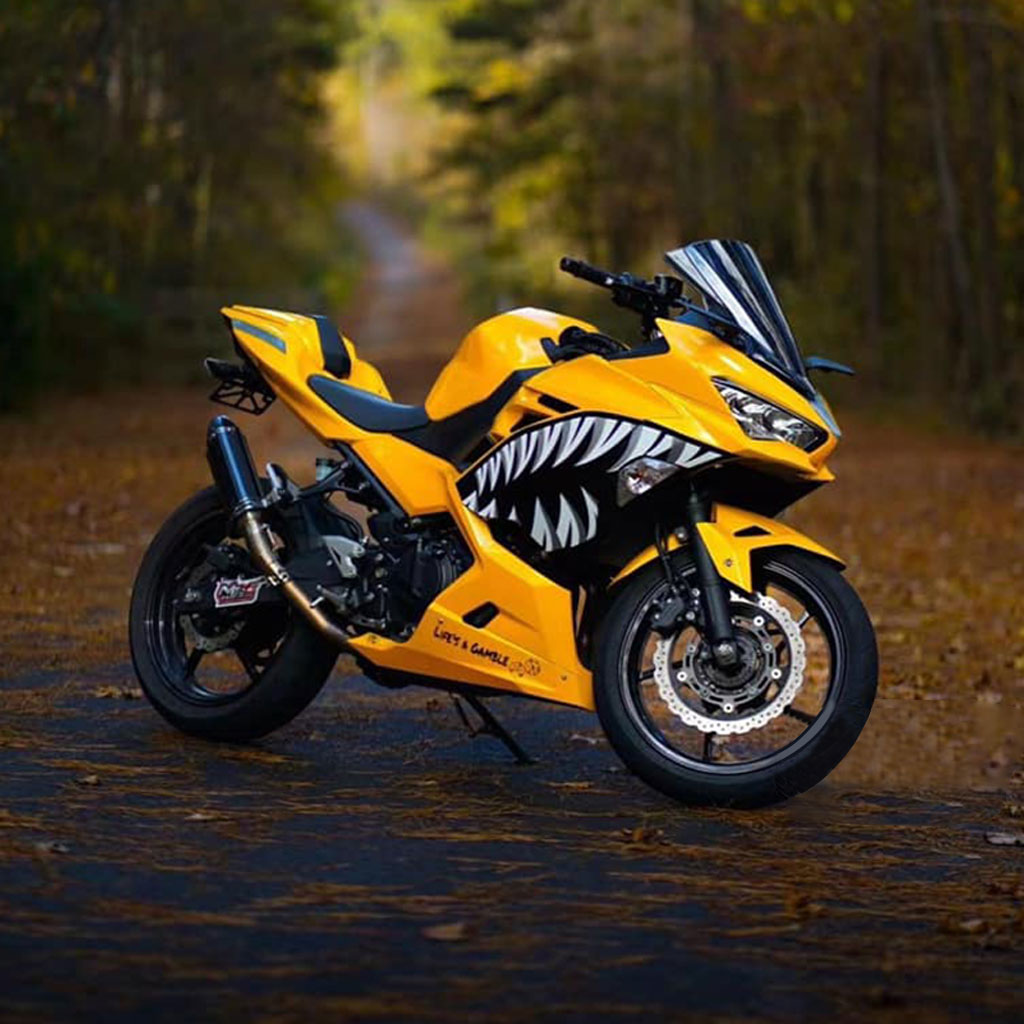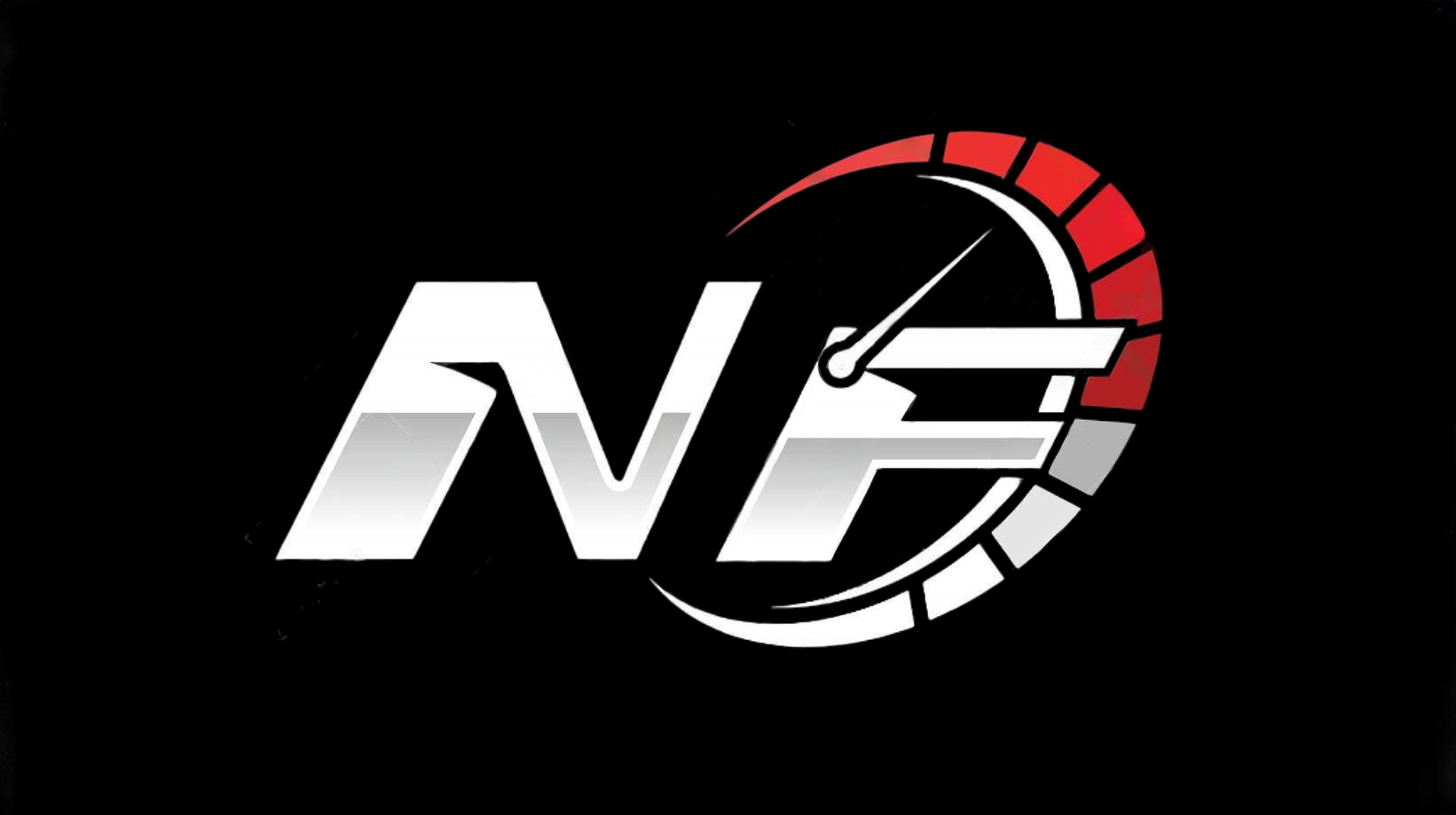Tracing the Evolution of the 08 Kawasaki Ninja 650 from 2008 to 2016
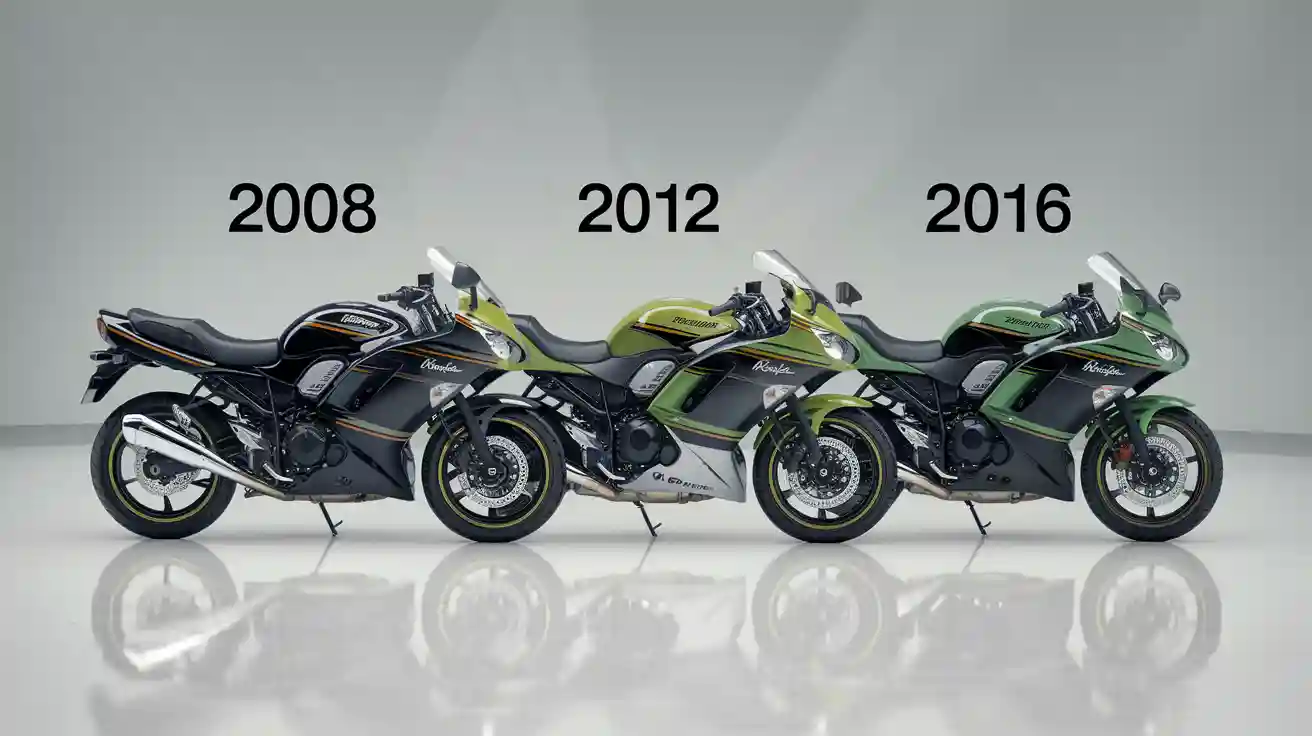
The 08 kawasaki ninja 650 began its journey as a middleweight ninja sportbike with aggressive styling, a compact 649cc engine, and a unique trellis frame. Over the years, kawasaki listened to riders and improved the model by refining handling, updating the frame, and adding new technology. The ninja’s history shows a clear focus on comfort, safety, and versatility. Riders saw changes like a lower seat, a wider handlebar, and better brakes. These updates made the kawasaki ninja motorcycles popular in motorcycle history and set new standards for the ninja lineup.
08 Kawasaki Ninja 650: The Original Model
Key Features and Performance
The 08 kawasaki ninja 650 entered the market as a standout among 2008 kawasaki motorcycles. This middleweight model delivered a strong balance of power and usability. Riders found the engine to be a liquid-cooled, 4-stroke DOHC parallel twin-cylinder with a 649cc displacement. The ninja produced about 67 horsepower at 8,000 rpm and 63 Nm of torque at 6,700 rpm. These specifications placed the ninja among the top 2008 motorcycle models for everyday riding and sporty performance.
Key features included:
- A steel fuel tank with a 15-liter capacity and a hinge-type cap
- Dual 300 mm front disc brakes with Nissin 2-pot calipers and a 220 mm rear disc
- 41 mm front fork suspension with 125 mm stroke and horizontal backlink rear suspension
- Rubberized footpegs with vibration balancer for comfort
- Optional DC power socket and lever adjusters with five settings
The ninja 650r’s power delivery felt smooth, with a flat torque curve from 4,000 to 7,000 rpm. Riders enjoyed responsive acceleration, especially between 4,000 and 9,000 rpm. The model’s gear speeds at 5,000 rpm made it practical for city and highway use.
| Specification | Value |
|---|---|
| Engine Type | Parallel twin-cylinder, 649cc |
| Power Output | 62 hp at 8500 rpm |
| Torque | 43 ft/lb at 7000 rpm |
| Torque Curve | Flat from 4000 rpm to 7000 rpm |
| Acceleration Sweet Spot | 4000-9000 rpm |
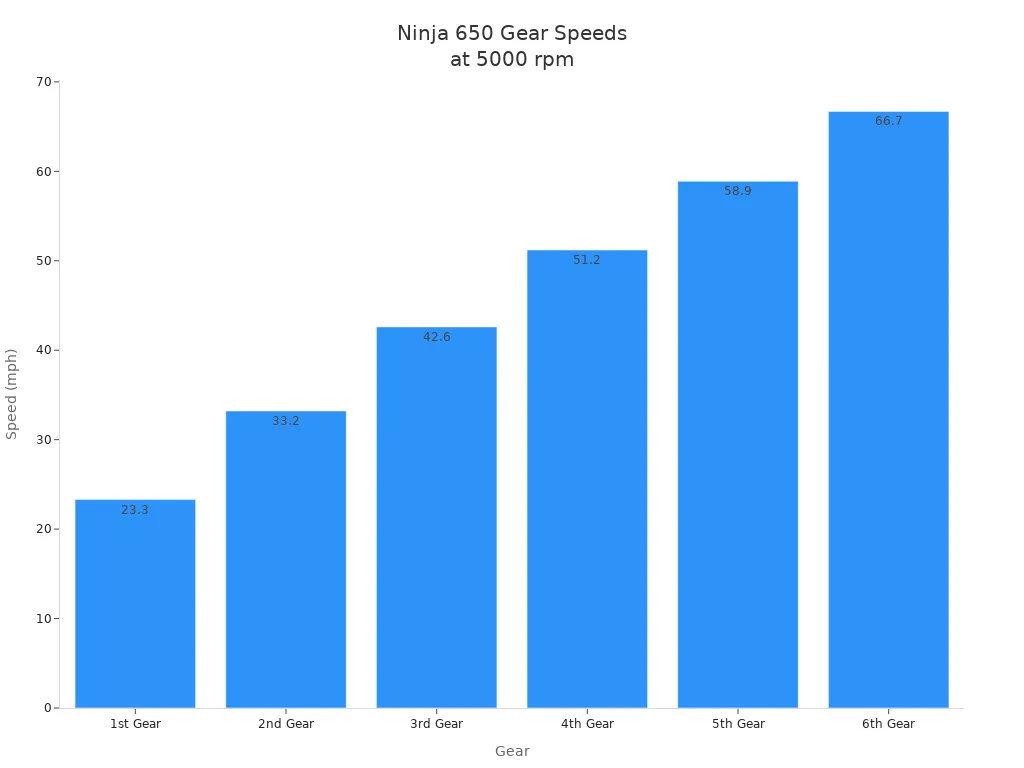
Design and Ergonomics
Kawasaki focused on rider comfort and usability in the design of the ninja. The ninja 650r featured a low, narrow seat height of about 31 inches, making it approachable for many riders. The seat’s textured surface helped keep the rider stable, while the narrow profile allowed easier flat-footing, especially for those with shorter inseams.
The footpegs sat slightly behind the knees, offering a comfortable leg bend without forcing an aggressive crouch. Handlebars rose up to meet the rider, encouraging an upright seating position and reducing wrist strain. The ninja’s light weight, around 393 pounds, improved maneuverability and confidence for both new and experienced riders.
Other ergonomic features included:
- Adjustable clutch and brake levers for different hand sizes
- Sculpted fuel tank for good knee grip and easy tuck-in
- Controls designed for low effort and easy reach
- Upright seating for better traffic awareness and less fatigue
The overall design of this kawasaki ninja model balanced sporty handling with comfort, making it one of the most versatile 2008 kawasaki motorcycles. Riders could enjoy both spirited rides and longer journeys, thanks to thoughtful features and practical specifications.
Kawasaki Ninja 650 Updates: 2009-2011
Styling and Visual Changes
Between 2009 and 2011, Kawasaki gave the ninja 650 a fresh look. The motorcycle received sharper bodywork and a more aggressive front fairing. The new design made the ninja stand out among other high-performance bikes. Kawasaki also improved the paint quality, giving the ninja a glossy finish that lasted longer. Riders noticed new color options and updated graphics. These visual upgrades helped the ninja appeal to both new and experienced riders. The changes made the motorcycle look modern and sporty, matching its reputation for performance.
Engine and Performance Adjustments
Kawasaki engineers focused on making the ninja 650 smoother and more efficient. They revised the fuel injection settings to boost low-end torque and improve throttle response. The 2010 model used a liquid-cooled, fuel-injected 649cc parallel-twin engine with an 11.3:1 compression ratio. The semi-dry sump oiling system kept the engine running cool. Dyno tests showed a slight drop in peak power, with horsepower moving from 65.7 hp to 61.8 hp and torque from 45.5 ft-lbs to 41.1 ft-lbs compared to earlier models. Despite this, the ninja kept its strong fuel efficiency at about 48 mpg. Kawasaki added a wider radiator for better cooling and rubber-mounted engine mounts for less vibration. These upgrades made the ninja easier to ride every day, with steady performance and reliable power delivery.
Frame and Chassis Refinements
Kawasaki made several important upgrades to the ninja 650’s frame and chassis:
- The 2009 ninja 650R featured a new trellis frame with better rigidity balance. This made the motorcycle lighter and more compact.
- Rubber upper-rear engine mounts and rubber-mounted handlebars reduced vibration for the rider.
- The swingarm design matched the frame’s rigidity, helping the ninja feel nimble and easy to handle.
- Suspension settings worked with the new frame and swingarm to give the ninja a friendly, predictable ride.
- Kawasaki narrowed the chassis just behind the fuel tank. This allowed for a slimmer, lower seat, making it easier for riders to reach the ground.
Note: These refinements led to lighter handling, less vibration, and greater comfort. Riders felt more confident and in control, whether commuting or enjoying a spirited ride.
Technology and Comfort Enhancements
Kawasaki introduced several technology and comfort upgrades to the Ninja 650 between 2009 and 2011. Riders noticed these changes right away. The motorcycle featured a MotoGP-inspired digital instrument cluster. This cluster included a fuel gauge, digital speedometer, clock, dual trip meters, and a bar-style tachometer. Riders found this technology easy to read and helpful during rides.
Kawasaki also focused on reducing vibration. Engineers added rubber mounts to the engine, handlebars, and footpegs. These changes made long rides more comfortable and reduced rider fatigue. The seat design improved as well. Kawasaki used thicker and wider foam for both the rider and passenger seats. This upgrade provided better support and comfort, especially on longer journeys.
Riders praised the Ninja 650 for its smooth acceleration and compliant ride quality. Many described the bike as sporty, responsive, and easy to handle. New riders appreciated the low seat height and revised riding position, which boosted confidence and comfort.
The Ninja 650 also offered practical features:
- Integrated turn signals and improved mirrors for better visibility
- Under-seat storage and tie-down hooks for carrying small items
- Hazard light function on the turn signals for added safety
Kawasaki’s use of technology made the Ninja 650 stand out among sportbikes. The digital display, vibration reduction, and ergonomic improvements created a user-friendly experience. Riders found the motorcycle affordable, versatile, and comfortable for both commuting and spirited riding.
Major Redesign of the Kawasaki Ninja 650: 2012-2016
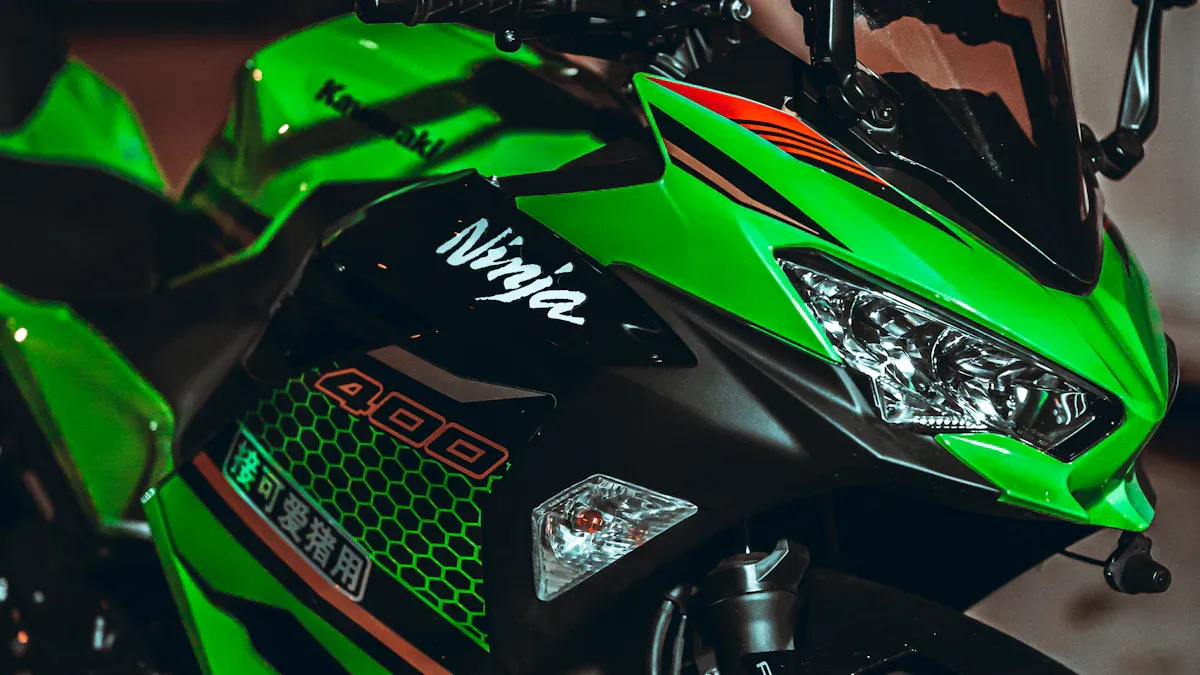
New Styling and Ergonomics
Kawasaki introduced a bold new look for the ninja 650 in 2012. The motorcycle displayed a more aggressive, supersport-inspired design. The bodywork featured a taller fuel tank, a shorter tail cowl, and dual headlights. Riders noticed a mass-forward stance that made the ninja appear compact and athletic. Kawasaki also improved wind protection by adding a three-position adjustable windshield. This feature reduced head buffeting and allowed riders to customize their comfort. The cockpit included a modern LCD instrument cluster with easy-to-read information. The handlebar became 20 mm wider, giving riders better leverage and control. Kawasaki reshaped the seat with thicker, wider foam, making long rides more comfortable. The slimmed chassis allowed shorter riders to place their feet closer to the centerline, improving confidence at stops.
Engine Refinements and Performance
Kawasaki engineers focused on refining the ninja 650’s engine for smoother power delivery and better performance. The redesigned exhaust system included a higher-volume muffler, which improved mid-range power. Riders experienced strong acceleration and responsive throttle control. The clutch cable featured an easier-pull design, reducing hand fatigue during city rides. Adjustable clutch and brake levers allowed riders to fine-tune their controls for comfort. The engine maintained its 649cc displacement but delivered power more efficiently. These upgrades helped the ninja 650 stand out in its class, offering a balance of everyday usability and sporty performance.
Frame, Suspension, and Handling Improvements
Kawasaki made significant changes to the ninja 650’s frame and suspension. The new twin-pipe perimeter frame was 50 mm narrower at the knees and footpegs, increasing comfort and control. The redesigned swingarm matched the frame’s flex and rigidity, enhancing stability. Suspension upgrades included revised damping settings and increased travel, which improved ride comfort and wheel control. Riders benefited from rubber-mounted seats, handlebars, and footpegs that reduced vibration. The brake system received improved pads and triple disc brakes, boosting safety and performance. Standard Dunlop Roadsmart II tires provided excellent grip and durability. These changes made the ninja 650 easier to handle, whether commuting or enjoying spirited rides.
Note: Kawasaki’s upgrades during this period focused on making the ninja 650 more comfortable, user-friendly, and high-performing. Riders of all sizes found the motorcycle approachable and enjoyable.
Braking and Safety Upgrades
Kawasaki improved the braking system of the Ninja 650 during the 2012-2016 period. Engineers added triple disc brakes, which gave riders more stopping power and better control. The front brakes used dual 300 mm petal discs with two-piston calipers. The rear brake featured a single 220 mm disc. These upgrades helped the motorcycle stop quickly and safely in many situations.
The brake pads also changed. Kawasaki used new materials that increased grip and reduced wear. Riders noticed smoother braking and less fading during long rides. The Ninja 650 offered optional ABS (Anti-lock Braking System) for the first time in this generation. ABS helped prevent wheel lock-up during sudden stops or on slippery roads. Many riders felt more confident with this safety feature.
Kawasaki also improved the tires. The Ninja 650 came with Dunlop Roadsmart II tires, which provided better traction and stability. These tires worked well in both dry and wet conditions. Riders experienced safer handling and more control, especially when cornering or braking hard.
Tip: Riders should check brake pads and tire condition often. Good maintenance keeps the motorcycle safe and ready for any ride.
Technology and Instrumentation Updates
The 2012-2016 Ninja 650 models introduced new technology and advanced instrumentation. Kawasaki added a modern LCD instrument cluster. This display showed important information like speed, rpm, fuel level, and gear position. Riders could see everything at a glance, even in bright sunlight.
A table below highlights some of the key technology features:
| Feature Category | Description |
|---|---|
| Engine Technology | Double overhead camshafts, lightweight pistons, and a 180-degree crank with a balancer shaft for smoothness. |
| Instrumentation | LCD panel with speedometer, tachometer, gear indicator, fuel gauge, and trip meters. |
| Assist and Slipper Clutch | Reduces clutch effort and prevents rear-wheel chatter during downshifts. |
| Dual Throttle Valves | ECU-controlled secondary valves for smoother engine response. |
Kawasaki also included an Economical Riding Indicator. This feature displayed an "ECO" mark when the rider used fuel efficiently. Riders learned to adjust their habits for better mileage. The Ninja 650 used digital fuel injection with 38mm throttle bodies and sub-throttle assemblies. This technology improved throttle response and made the engine run smoothly.
- Riders enjoyed Bluetooth smartphone connectivity through RIDEOLOGY THE APP. This app let them check vehicle info, riding logs, and notifications.
- The three-position adjustable windscreen gave riders more comfort and protection from wind.
- The seat design used new foam and a lower height for better comfort on long rides.
These updates made the Ninja 650 a leader in technology among middleweight motorcycles. Riders found the new features helpful for both daily commuting and weekend adventures.
Comparing Generations of the Kawasaki Ninja 650
Styling Evolution Across Years
The ninja changed its look several times from 2008 to 2016. Each update made the motorcycle more modern and comfortable for riders. Here is how the styling evolved:
- The 2008 model started with a single headlight and a one-piece seat. The design focused on comfort and simple lines.
- In 2009, the ninja received new bodywork, mirrors, and lighting. The gauges also changed, giving the model a fresher appearance.
- By 2012, the ninja dropped the "R" from its name. The motorcycle now had a full fairing with a dual headlight system. A medium-sized windscreen improved aerodynamics and rider comfort.
- The 2012 update introduced a two-piece dual seat assembly. This change made the seat more comfortable for both the rider and passenger.
- The exhaust moved under the belly of the bike, creating a cleaner rear profile.
- Six-spoke lightweight wheels gave the ninja a sportier look.
- The frame became a high-tensile steel perimeter type, supporting the new styling and handling.
Note: The changes between 2008 and 2016 focused on making the ninja look sharper and feel more comfortable. The updates did not completely redesign the motorcycle but improved its appeal for everyday use.
Engine and Performance Differences
The engine in the ninja stayed reliable across all models, but each generation brought small changes to improve the ride. The table below shows the main differences:
| Model Years | Engine Design & Changes | Compression Ratio | Other Notes |
|---|---|---|---|
| 2008 | All-new engine introduced, designed for longevity | N/A | Original design, minimal major changes afterward |
| 2009-2011 | Continuation of original engine design | 11.3 | Maintained peppy character, no major engine redesign |
| 2012-2016 | New piston design, changes to exhaust and air box | 10.8 | Different piston, cylinder, cylinder head, valve codes; increased weight due to emissions and civility improvements; vibration-reducing inserts in mounts |
The 2008 and 2009-2011 models shared a similar engine. The 2012-2016 ninja received new pistons and a revised exhaust system. The compression ratio dropped slightly, which made the engine smoother and quieter. The changes also increased the weight a little, but the performance of the ninja remained strong for daily riding and sporty use.
Tip: Riders noticed that the 2012-2016 models felt more refined and easier to control, especially at low speeds.
Frame, Chassis, and Handling Comparison
The ninja’s frame and chassis changed to improve comfort and handling. The first generation used a steel frame with a focus on stability. The 2009 update made the frame lighter and more compact. Rubber mounts reduced vibration, making the ride smoother.
In 2012, the ninja switched to a high-tensile steel perimeter frame. This frame was narrower at the knees and footpegs, helping riders feel more in control. The swingarm matched the frame’s rigidity, which improved stability. Suspension upgrades added more travel and better damping, making the motorcycle handle bumps and turns with ease.
The ninja’s handling became more predictable and friendly for new riders. The changes also helped experienced riders enjoy spirited rides. The 2012-2016 models balanced comfort and sportiness, making them popular for commuting and weekend adventures.
Riders found that each generation of the ninja offered better ergonomics and easier handling. The updates made the motorcycle suitable for a wide range of riders, from beginners to experienced enthusiasts.
Technology and Rider Experience
Kawasaki made many changes to the Ninja 650’s technology and rider experience from 2008 to 2016. Each new model brought updates that helped riders feel safer, more comfortable, and more connected to their motorcycles.
Instrumentation and Displays
The first Ninja 650 models used simple analog gauges. Riders saw a large speedometer and a small digital display for the odometer and trip meters. In 2009, Kawasaki added a digital instrument cluster. This new display showed speed, fuel level, and a bar-style tachometer. Riders found it easier to read, especially in bright sunlight. By 2012, the Ninja 650 featured a modern LCD panel. This panel included a gear indicator, fuel gauge, and trip meters. Riders could check all important information at a glance.
Rider Aids and Electronics
Early Ninja 650 models did not have advanced electronics. Riders relied on their skills for safe riding. In 2012, Kawasaki introduced optional ABS. This system helped prevent wheel lock-up during hard braking. Riders felt more confident, especially on wet roads. The ABS system worked with triple disc brakes for better stopping power. Later models added an economical riding indicator. This feature showed when the rider used fuel efficiently. Riders learned to save gas and ride longer between fill-ups.
Comfort and Ergonomics
Kawasaki always focused on comfort. The 2008 Ninja 650 had a low seat and upright handlebars. Riders could sit comfortably for long rides. In 2009, Kawasaki improved the seat with thicker foam. Rubber mounts on the engine and handlebars reduced vibration. Riders felt less tired after long trips. The 2012 redesign brought a wider handlebar and a three-position adjustable windscreen. Riders could change the windscreen to block more wind or let in more air. The seat became even more comfortable, with better support for both rider and passenger.
Braking and Safety
Safety improved with each generation. The first models used dual front disc brakes and a single rear disc. In 2012, Kawasaki upgraded the brake pads and added ABS as an option. Riders noticed smoother stops and better control. The new Dunlop Roadsmart II tires gave better grip on wet and dry roads. Riders felt safer when cornering or braking hard.
Technology Evolution Table
The table below shows how the Ninja 650’s technology and rider experience improved over time. It also compares some features with the latest 2025 model for context.
| Aspect | 2008-2011 Features | 2012-2016 Features | 2025 Advancements (for comparison) |
|---|---|---|---|
| Rider Aids & Electronics | Basic electronics, no ABS | Optional ABS, economical riding indicator | Traction control, advanced ABS, multiple intervention levels |
| Instrument Panel | Analog/digital combo, basic info | LCD panel, gear indicator, trip meters | Full-color TFT display, menu navigation, smartphone integration |
| Ergonomics & Comfort | Low seat, upright bars, rubber mounts | Wider handlebar, adjustable windscreen, improved seat | All-day comfort seat, neutral footpeg, upright handlebar |
| Braking System | Dual front discs, single rear disc | Upgraded pads, optional ABS, better tires | Enhanced ABS, progressive feel, dual front discs |
| Standard Features | Basic lighting, analog gauges | LCD panel, ABS (optional), improved lighting | LED lighting, TFT panel, ABS, traction control, assist and slipper clutch |
| Optional Features | None | ABS | Quick shifter, heated grips, color schemes, accessories |
| Evolution Pattern | Focus on comfort and usability | More technology, better safety, improved comfort | Refinement, advanced electronics, sharper design |
Note: Kawasaki improved the Ninja 650 step by step. Each new model added features that made riding safer and more enjoyable. Riders today benefit from years of careful upgrades.
Real-World Rider Experience
Riders noticed these changes right away. Many said the new seat and handlebars made long rides easier. Others liked the clear LCD display and the helpful gear indicator. Riders who chose ABS felt more secure, especially in the rain. The adjustable windscreen helped block wind on highways. Riders of all sizes found the Ninja 650 comfortable and easy to control.
- Riders enjoyed:
- Smooth power delivery
- Easy-to-read displays
- Less vibration and more comfort
- Safer braking with ABS
Kawasaki’s focus on technology and rider experience helped the Ninja 650 become a favorite for many. Riders trusted the motorcycle for daily commutes, weekend trips, and even long journeys. The Ninja 650’s evolution shows how small changes can make a big difference in the way a motorcycle feels on the road.
The 08 kawasaki ninja 650 changed a lot from 2008 to 2016. Each update made the bike better for riders.
- The 08 kawasaki ninja 650 gained a lighter frame, better suspension, and improved brakes.
- New features like ABS and a modern display made riding safer and easier.
- Riders found the bike more comfortable and sporty after each review.
These changes matter because they help both new and experienced riders enjoy a bike that balances power, comfort, and style.
FAQ
What are the biggest changes in the Ninja 650 from 2008 to 2016?
Kawasaki improved the Ninja 650’s frame, added ABS, and updated the styling. The company also made the seat more comfortable and the display easier to read. Riders noticed better handling and more safety features.
Is the Ninja 650 a good choice for new riders?
Many new riders find the Ninja 650 easy to handle. The low seat height and upright handlebars help with control. The bike’s smooth power delivery and light weight make it friendly for beginners.
How often should owners service the Ninja 650?
Kawasaki recommends oil changes every 3,000 to 5,000 miles. Owners should check the brakes, tires, and chain regularly. Following the maintenance schedule in the owner’s manual keeps the bike running well.
Did the Ninja 650 get new technology during these years?
Yes. Kawasaki added a digital LCD display, an economical riding indicator, and optional ABS. These features help riders stay informed and safe. The updates made the Ninja 650 more modern and user-friendly.
Tip: Riders can find more details about features and maintenance in the official Kawasaki owner’s manual.
See Also
Detailed Analysis of Ninja 650 Kawasaki Fairing Performance
Complete 2025 Review of Kawasaki Ninja H2R Model
Top Six Stylish Motorcycles Perfect For New Riders 2025
